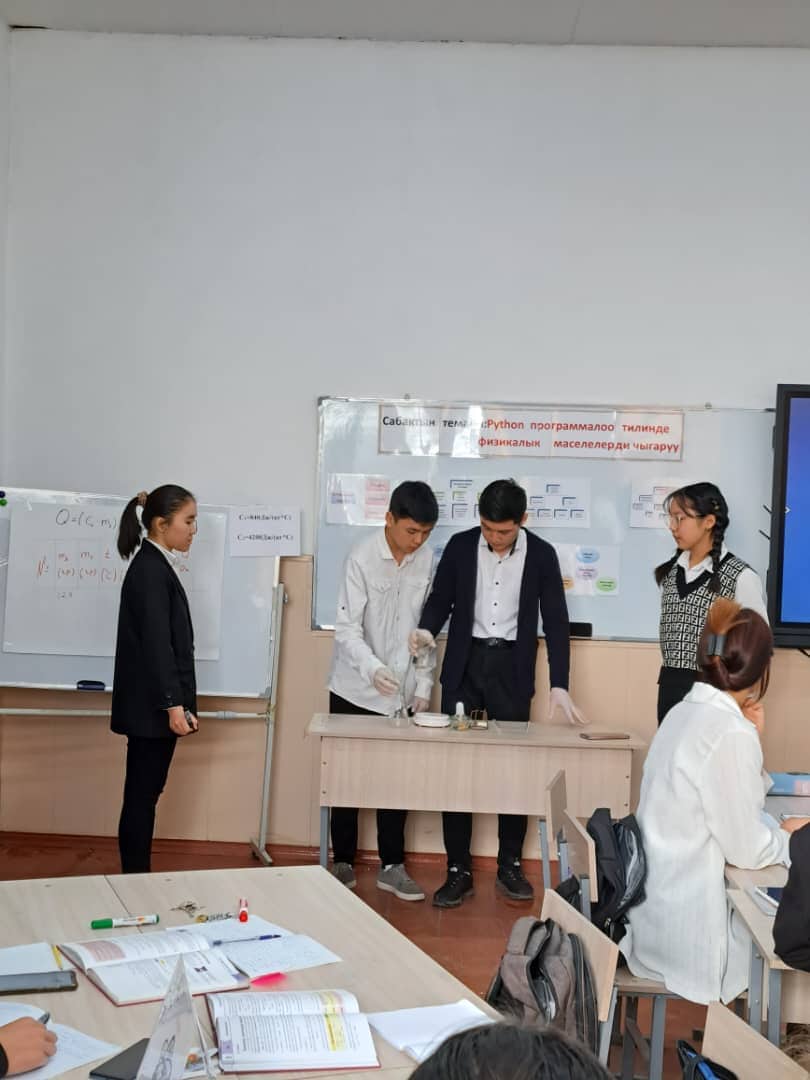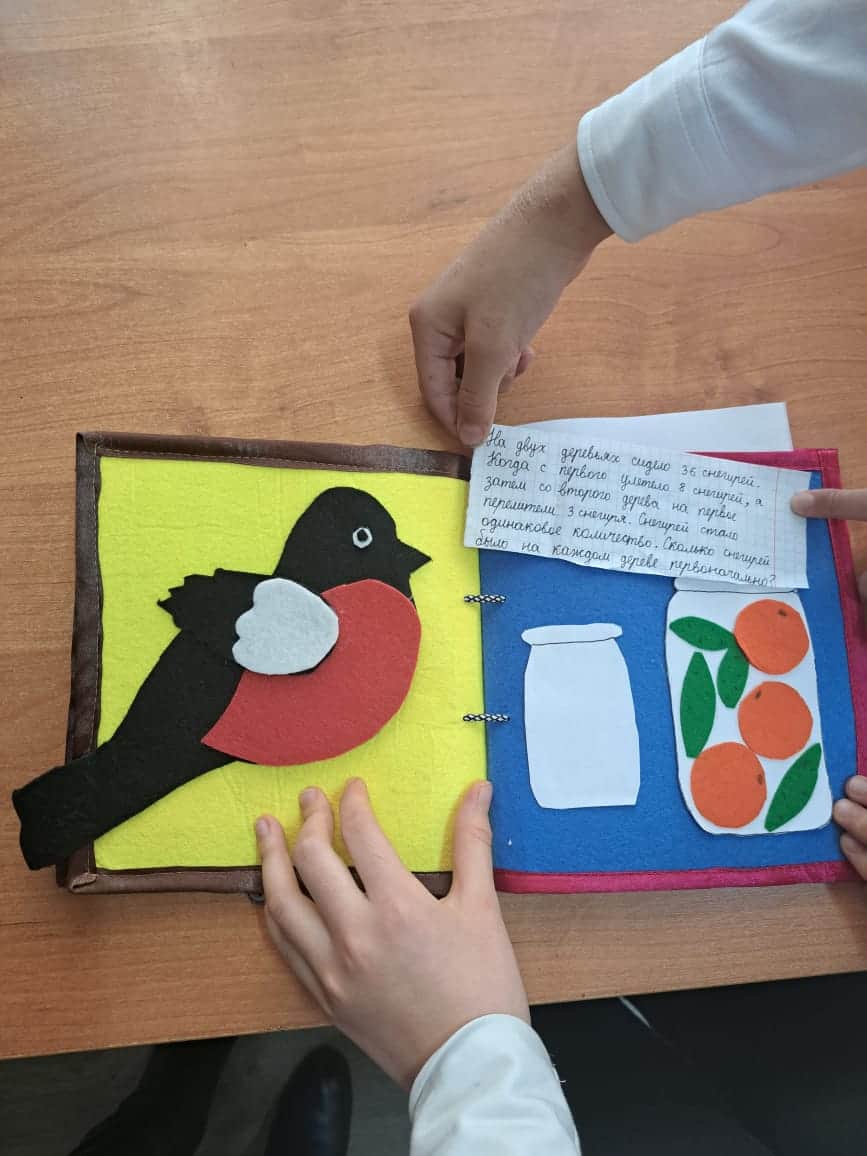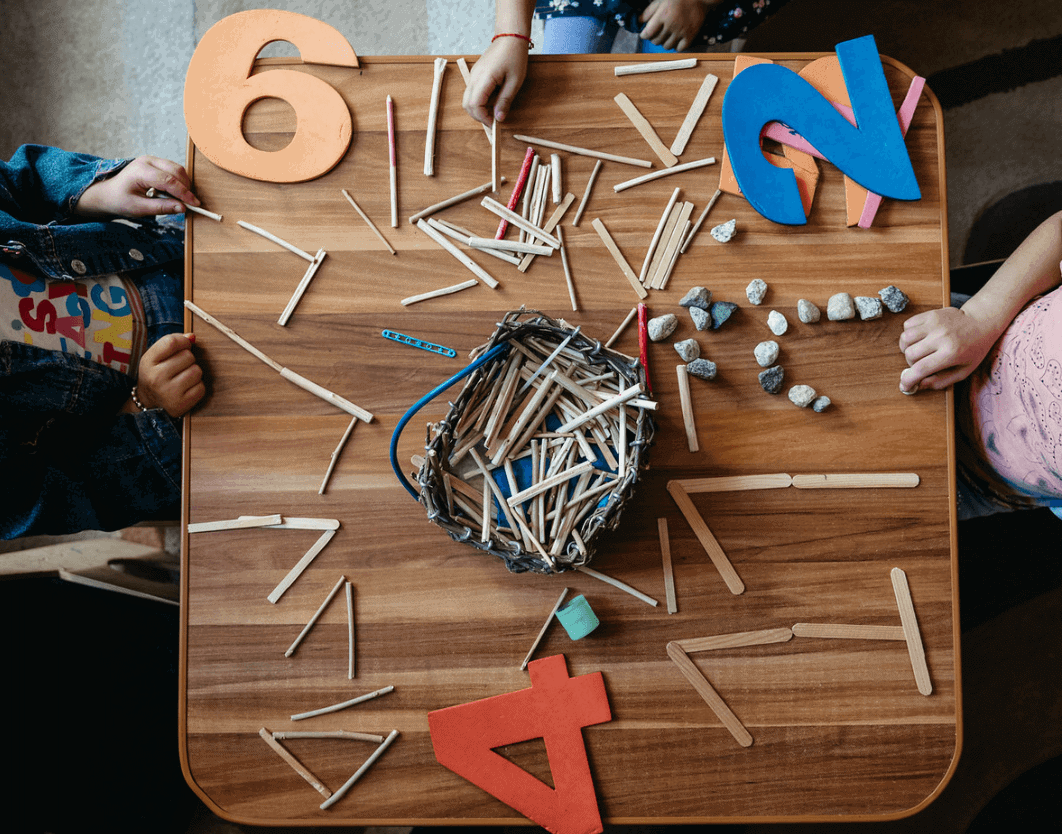Leveraging the power of human-centered-design (HCD) and the support of the Schools2030 initiative, 4th-grade teacher Tumarkan (Tumar) Kulueva, has created a student-centric learning experience that has ignited a passion for mathematics among her students. Titled “The Mathematical Treasure Chest,” Tumar’s innovation aims to tackle some of the issues that her school faces.
Tumar’s school, located in Chui Oblast, Kyrgyzstan, is the most populated school in the country with 4,994 students, and as such often experiences overcrowded classrooms with uninterested and distracted students. Yet, with the support of Schools2030, Tumar and her school’s design team embarked on a journey to enhance student engagement in mathematics.
Tumar’s innovation began with extensive interviews with students and parents, which enabled her to identify the key problem: a lack of integration and relevance of mathematics in students’ lives. Then, Tumar collaborated with the school administration and other subject teachers to develop a comprehensive solution. By considering various perspectives and weighing various insights, Tumar ensured that the innovation was aligned with the needs and hopes of the entire school community. Her primary goal? To enhance mathematics education and nurture critical thinking skills.



Tumar outside her school and with some students sharing their ‘maths in cooking’ project
At its core, “The Mathematical Treasure Chest” contains a series of project-based activities that have been designed to elicit curiosity in mathematics. Each activity is oriented to be relevant to the local context, and projects span across various subjects such as physics, chemistry, geography, technology, computer science, domestic studies, and literary studies. In their project groups, students investigate key mathematical concepts as they are applied to real-life issues. And to further get a sense of applied mathematics, Tumar and the design team have brought in multiple guest speakers to present how they utilize mathematical concepts in their daily life; examples include successful entrepreneurs, agricultural experts, government officials, and more. Every so often, “The Mathematical Treasure Chest” also hosts mathematics competitions.
The outcomes of this innovation have been resoundingly positive. As Tumar and her colleagues have observed, students have shown a dramatic increase in their curiosity in mathematics and have started to recognize the interconnection between mathematics and other subjects. Alexander, a student of grade 9, described:
“Before, I didn’t understand how math is connected to other subjects, and I used to think of math as its own separate thing, not really related to the real world. But now, my teachers introduced cool activities that showed me how math is connected to physics, chemistry, and other subjects. It made math much more interesting and important to me. Now I can analyze information from different subjects, draw conclusions, and see how everything is connected.”


Tumar and her students
With these refueled passions, students have also been able to develop their abilities to think independently and plan, analyze, and evaluate their own work. Moving past the current mathematics curriculum, students have also been given the opportunity to effectively express their ideas while working through multiple problem-solving approaches.
“It has been incredible to see how parents have participated too,” Tumar noted. Many parents have expressed satisfaction with this project, noting their children’s heightened engagement and newfound appreciation for mathematics. Astra, a mother of 4th-grader Ainuru, remarked:
“I’ve noticed that my daughter has become more interested in math. She’s started doing her homework on her own, which makes me really happy. The teachers invited us, parents, to the school and we got to participate in various activities with our children. It helped us understand how important it is for parents to be involved in their children’s education. The teacher explained math concepts to us and children through games and fun activities making connections with real life, like figuring out utility bills and measuring things. It was awesome!”
Parents have appreciated how this innovation, unlike past programs, has successfully demonstrated the practical applications of mathematics in real-life scenarios. They have also expressed gratitude to Tumar, the design team, and Schools2030 for being included in the design process.
On a similar note, Tumar has acknowledged the critical role that AKF played in her understanding and application of HCD. Through mentorship and HCD workshops, Tumar has crucially learned that “great solutions are those that are student-centric.” She hopes that student voices remain at the core of future innovations, and that AKF can continue to impact schools across her region.
Looking ahead, Tumar also dreams of sharing her experiences and exchanging ideas with other schools nearby. Tumar is confident that “The Mathematical Treasure Chest” has the potential to impact students on a larger level, yet to reach such a scale, Tumar acknowledges the importance of government support. Specifically, she hopes that the Ministry of Education can address resource deficiencies, incorporate new innovations in national curricula, and advocate for better support for teachers. In the meantime, however, Tumar’story stands as a testament to the transformative power of Schools2030 how HCD innovations can yield real results for real students.
